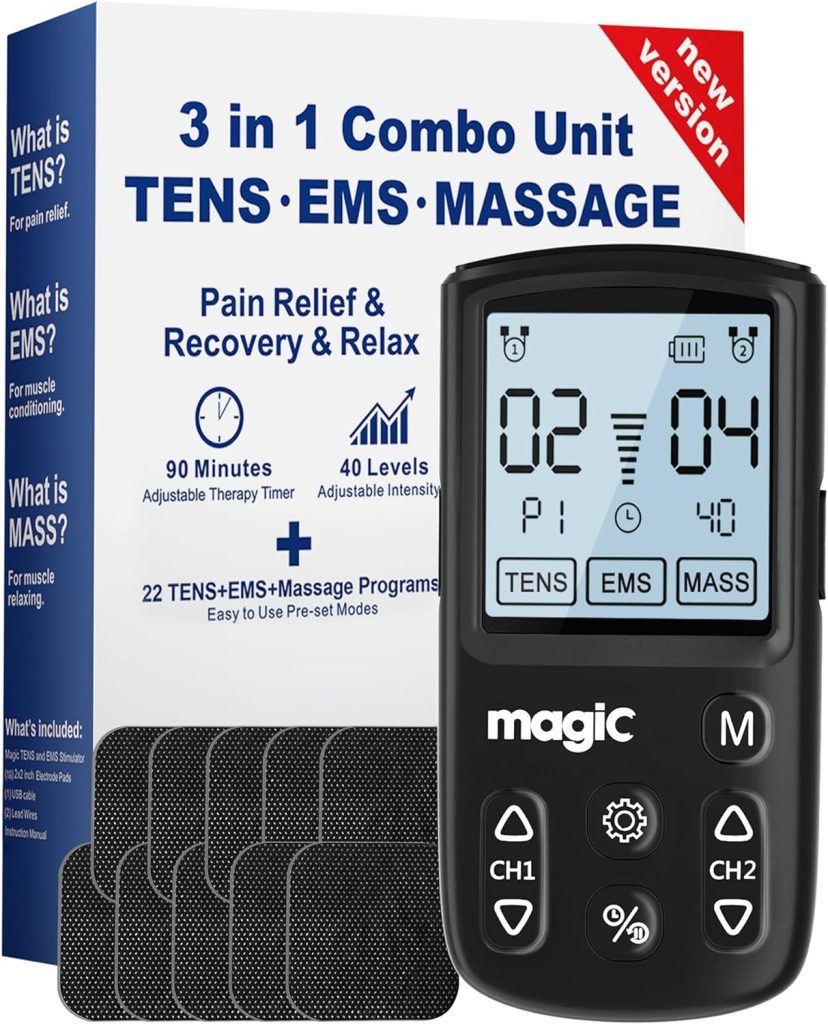Affiliate Disclosure: This post may contain affiliate links. This means we may earn a commission if you make a purchase through these links. This is at no extra cost to you. We only recommend products and services we truly believe in. Your support helps us keep the site running! Thank you.
The best pain relief for hypermobility varies from person to person. Usually, a multi-step approach to pain relief is best. This means using a combination of medication, exercise, heat therapy, relaxation, and aids to help hypermobility.
Why is hypermobility syndrome so painful?
Hypermobility syndrome is painful because of your body’s faulty collagen. Collagen is found throughout the entire body. But in people with hypermobility, their collagen doesn’t work as effectively as it should.
This means the ligaments, joints, and tissues in the body aren’t adequately supported. As a result, the joints are more flexible than they should be and this leads to pain.
A hypermobile body also needs to work extra hard to support itself due to the faulty collagen. This is another reason why hypermobility is painful and causes fatigue.
What should you not do with hypermobility?
If you’re experiencing hypermobility-related pain, it’s important not to push yourself and overdo things. Instead, make sure you pace yourself and take regular rest breaks.
We’ve got some great home cleaning tips for hypermobile sufferers that will ensure your home stays spick and span without heightening your pain. Or, why not check out our advice for hypermobile people and floor maintenance?
Your pain may also worsen if you perform ‘party tricks’. Your friends may think it’s cool that you can put your foot over your head or that you can do the reverse prayer sign. But it’s not something you should do as you risk damaging your joints and injuring yourself.
What medication gives the best pain relief for hypermobility?
Ok, so now you know why your condition causes pain, let’s find out what’s the best pain relief for hypermobility.
First of all, let’s talk medication. Some of drugs recommended for hypermobility are:
- Pain relievers: Nonsteroidal anti-inflammatory drugs (NSAIDs) or acetaminophen (paracetamol) may be used to manage pain and inflammation associated with joint hypermobility.
- Muscle relaxants: These medications can help alleviate muscle spasms or tightness that may occur due to joint hypermobility. Research has found that 42% of people with EDS report improvement in their symptoms when using muscle relaxants.
- Physical therapy medications: Topical analgesics or anti-inflammatory creams may be recommended as part of a physical therapy program to manage localized pain and discomfort.
- Joint-stabilizing medications: In some cases, medications that support collagen formation or maintenance, such as vitamin C or other supplements, may be considered.
Related Post – The supplements most recommended for hypermobility.

BOB AND BRAD C2 Pro Massage Gun with Heat and Cold Therapy. Click here to check price and buy now.
Can exercise provide pain relief for people with hypermobility?
Yes, exercise can be an effective way for people with hypermobility to manage pain. Closed chain exercises are generally recommended for hypermobile patients as they’re gentle on the joints and help to support and strengthen them.
One study found that an eight-week closed chain and proprioception exercise programme improved pain and proprioception in hypermobile patients.
When using exercise as pain relief for hypermobility, consider one of the following types:
- Strength Training: Focus on strengthening the muscles around hypermobile joints to provide better support. This includes exercises targeting the core, hips, and shoulders. Resistance training with light to moderate weights and high repetitions may be suitable.
- Stability Exercises: Include exercises that improve joint stability. This can involve using stability balls, balance exercises, and exercises on uneven surfaces to challenge and improve proprioception (awareness of body position).
- Low-Impact Aerobic Exercise: Activities such as swimming, cycling, or walking can help improve cardiovascular fitness without putting excessive strain on the joints. These exercises can be gentler on the joints compared to high-impact activities.
- Flexibility Exercises: While hypermobility often involves excessive joint flexibility, it’s essential to focus on maintaining a healthy range of motion rather than pushing joints beyond their normal limits. Gentle stretching can help improve flexibility without exacerbating joint laxity.
- Pilates and Yoga: These forms of exercise can be beneficial for improving core strength, balance, and body awareness. But, you mustn’t overextend your joints when doing these exercises as this may cause damage and worsen pain. Always choose instructors who are familiar with hypermobility and can modify exercises accordingly.
How heat therapy can ease hypermobility pain
There are lots of ways to use heat therapy to ease your hypermobility pain. One of the easiest is to take a long soak in a hot bath. And, while you’re relaxing in the water, why not pass the time by listening to a great audiobook or podcast?
Another easy way to use heat therapy on your joints is with a hot water bottle. You can even get ones that come in a wrap that secure to your body, so you can use them on a walk, when you’re sitting in your ergonomic office chair, cleaning the house, cooking, and more!
Other great heat therapy options for joint pain include:
- Heated blankets
- Hot packs
- Heating pads
- Microwavable heat pads
- Red light therapy wands
- Infrared heat lamps
- Heated wraps
- Heated weighted blankets
- Heated deep tissue massage gun
- Hot water therapy machine

Heat therapy is effective for hypermobile pain because the heat increases blood flow in the body. This then increases elasticity in connective tissue. Multiple studies support using heat therapy for pain relief, including the research titled ‘Mechanisms and efficacy of heat and cold therapies for musculoskeletal injury’.
Relaxation is a great for hypermobility
How often do you stop, sit down, and relax?
If you’re anything like me, then I bet it’s not very often. A study from Benson for Beds reports that the average person relaxes just three times per week.
As someone with hypermobility, it’s important that you make time to relax, especially when you’re in pain.
Relaxation techniques for hypermobility include:
- Deep breathing
- Meditation
- Yoga
- Tai-chi
- Massage
- Art therapy
- Music therapy
- Aromatherapy
- Visualization
- Seated exercise
Research supports using relaxation to control pain too. One study found that meditation helped people with Ehlers-Danlos to be more aware of their bodies. They also reported less pain.
Aids that help hypermobility pain

Tens Unit Muscle Stimulator Machine. Click here to check price and buy now.
Aids for hypermobility are items that provide pain relief and make day to day life a little easier.
These items include:
- Resistance Bands: Used in exercises to strengthen muscles around joints.
- Foam Rollers and Massage Tools: Assist in managing muscle tightness and discomfort.
- Braces and Splints: Provide stability and limit excessive joint movement.
- Ear seeds – Use Chinese acupuncture to help with pain.
- Tens machine – A device that uses electrical impulses to alleviate pain.
- Compression Garments: Help reduce swelling and provide support.

